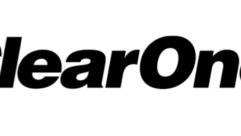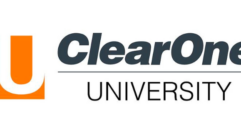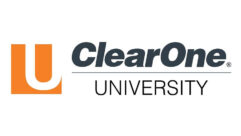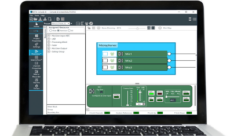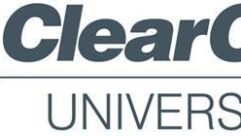
ClearOne Converge 560/590
Jun 1, 2006 12:00 PM,
By John McJunkin
Semi-customized conferencing system provides flexibility and clear audio.
ClearOne of Salt Lake City is well known for high-quality conferencing systems. The company’s latest offering is yet another example of why it is on the short list of go-to manufacturers when solid conferencing solutions are necessary. Its Converge 560 and Converge 590 systems offer the contractor many options in developing a semi-customized solution.
The applications for which the Converge system is intended include boardrooms, multimedia conference rooms, distance learning rooms, classrooms with videoconferencing, and courtrooms and/or legal hearing rooms. Plug-and-play solutions that include tabletop microphones as part of a complete setup may not quite fit the bill in many of these situations. Indeed, clients may have very specific needs: for instance, a boardroom table with boundary microphones, a podium mic, and video playback. And I certainly have favorite microphones that I like to incorporate in conferencing systems. Converge is flexible enough to accommodate these needs very nicely.
The system provides full-duplex operation so participants can speak and listen simultaneously, without the cutting out associated with a half-duplex system. The company claims onboard DSP enables “natural, full-sounding audio” via a regular phone line. ClearOne’s Acoustic Echo Cancellation works well to eliminate echo, further increasing speech intelligibility. The system also features noise cancellation to eliminate fan and/or air conditioning noise. Audio is automatically kept at consistent levels, and first-mic priority eliminates the phase-cancellation “tunnel” effect by activating only the mic closest to the person speaking. The system also enables local sound distribution, so a presenter’s voice can be amplified.
Another powerful feature is the ability to interface with video- or webconferencing systems, enabling the delivery of high-quality audio along with the visual. Multiple pan/tilt/zoom (PTZ) camera presets can be activated with camera voice tracking. The system also features outputs for recording and playback of both sides of a teleconferenced conversation. In legal environments, this can be very useful. A standard telephone dial pad and included configuration and device management software allow simple user control over the system. A built-in web server offers remote access. Standard XLR connectors in the microphone distribution boxes allow connection to your favorite microphones. The system also features a 10W amplifier to drive your choice of speakers, and obviously, external amplification and speakers are supported. The mixer can be placed on the boardroom table, a credenza, or in a rack. Similarly, the microphone distribution boxes can be rack mounted or placed around the room to keep cable runs as short as possible. The tabletop controller is available in both wired and wireless varieties.
IN PRACTICE
I test-drove the Converge 560, which consists of an audio mixer, a tabletop controller, two microphone distribution boxes with a rack kit, a pair of Bose 161 speakers, and configuration and device management software. The system was a breeze to set up right out of the box. The necessary cabling was included, with the exception of speaker wire. A conferencing system such as this shouldn’t require an advanced degree in rocket science, and ClearOne has very successfully managed to keep the system simple in terms of setup and usage. I had no trouble getting everything connected and into operation in just a few minutes.
I have a policy of not opening a manual until I absolutely have to — I believe it’s instructive in terms of determining how intuitive and easy to use a system is. In this case, I was quite literally able to get the entire system up and running without cracking the manual. It’s very self-explanatory. The Converge delivers with ClearOne’s RAV software, facilitating sophisticated, in-depth PC control of the entire system. I easily got the software installed and was up and running in no time.
I test-drove the system with the included boundary microphone and also with boundary and podium mics from another major manufacturer. Establishing a connection was as simple as making a phone call and pressing the “on” key of the tabletop controller. Initially, the quality (or more correctly, the quantity) of the audio transmitted by the system was a little low. This is where computer control came into play. I opened the RAV software on my laptop, which was connected to the audio mixer via USB (remote connection via IP is also possible). Using the software, I was able to increase the gain of the system microphones and, most importantly, increase the level at which the system sent the signal to the phone line.
That accomplished, the audio sounded spectacular. ClearOne has spent a lot of R&D dollars developing DSP with the intention of presenting full, clear, intelligible audio on both ends of the conversation, and it has unquestionably reached that goal. With the included Bose 161 speakers, the other end of the conversation was heard loudly and clearly in the conference room. The Converge’s 10W amplifier provides plenty of power for most of the applications for which the system would be used.
Each of the Converge 560’s microphone breakout boxes can accommodate up to three microphones and connects to the audio mixer via Cat-5 cable. The Converge 590 system has three breakout boxes, facilitating the connection of up to nine microphones. There are connections for video codecs, computer sound cards, amplifiers, and VCRs or DVD players. Additionally, there is a connection for control of a PTZ camera, along with both serial and USB computer connections.
The RAV software provides some pretty sophisticated control over the system, including EQ, gain, muting, and even the switching of phantom power in the breakout boxes. Echo cancellation, nonlinear processing (further echo elimination), and noise cancellation can each be enabled or disabled via computer control, as well. Up to three parametric filters are also available — a very powerful feature. There are gates for each mic in the system, and a “chairman override” function, enabling a meeting leader to take precedence in a conversation.
ClearOne’s AEC processing is a very effective echo-cancellation algorithm, and it contributes strongly to the quality of the audio emerging on the other end of the conversation. That, in conjunction with the other DSP in the system, enables the two-way transmission of very high-quality audio over a phone line. I’m also impressed with the flexibility of the system, in terms of using my own favorite mics. If you need a high-quality conferencing solution, I strongly recommend the Converge.
PRODUCT SUMMARY
Company: ClearOne
www.clearone.com
Product: Converge 560/590
Pros: Flexible, high-quality conferencing system.
Cons: Tabletop controller LCD display difficult to read.
Price: Converge 560: $3,099; Converge 590: $3,499
SPECIFICATIONS
Audio mixer
AEC tail time: 128ms
Adaptive noise cancellation: (6dB to 18dB)
Gating: Adaptive ambient, first mic priority, look-ahead gating, NOM attenuation
Audio bandwidth: 16kHz with fullband networks
Microphone distribution box
Maximum level: +17dBu
Frequency response: 20Hz-14kHz
THD: <0.01 percent
Impedance: 5k
Telephone interface
Tail time: 30ms
Frequency response: 250Hz-3.3kHz (±1dB)
THD+N: <0.2 percent (+7dBu line input at 1kHz)
Dynamic range: >60dB
Dimensions
Mixer: 17″×7.5″×2″
Controller: 10.5″×4.5″×2.75″
Mic box: 4.7″×5.6″×1.7″
Power supply
Primary voltage: 100VAC-240VAC
Auto-sensing: 50Hz-60Hz
John McJunkin
is the principal of Avalon Audio Services in Phoenix, and consults in both studio commission and live sound applications. He is also a key figure at the renowned Conservatory of Recording Arts & Sciences.


